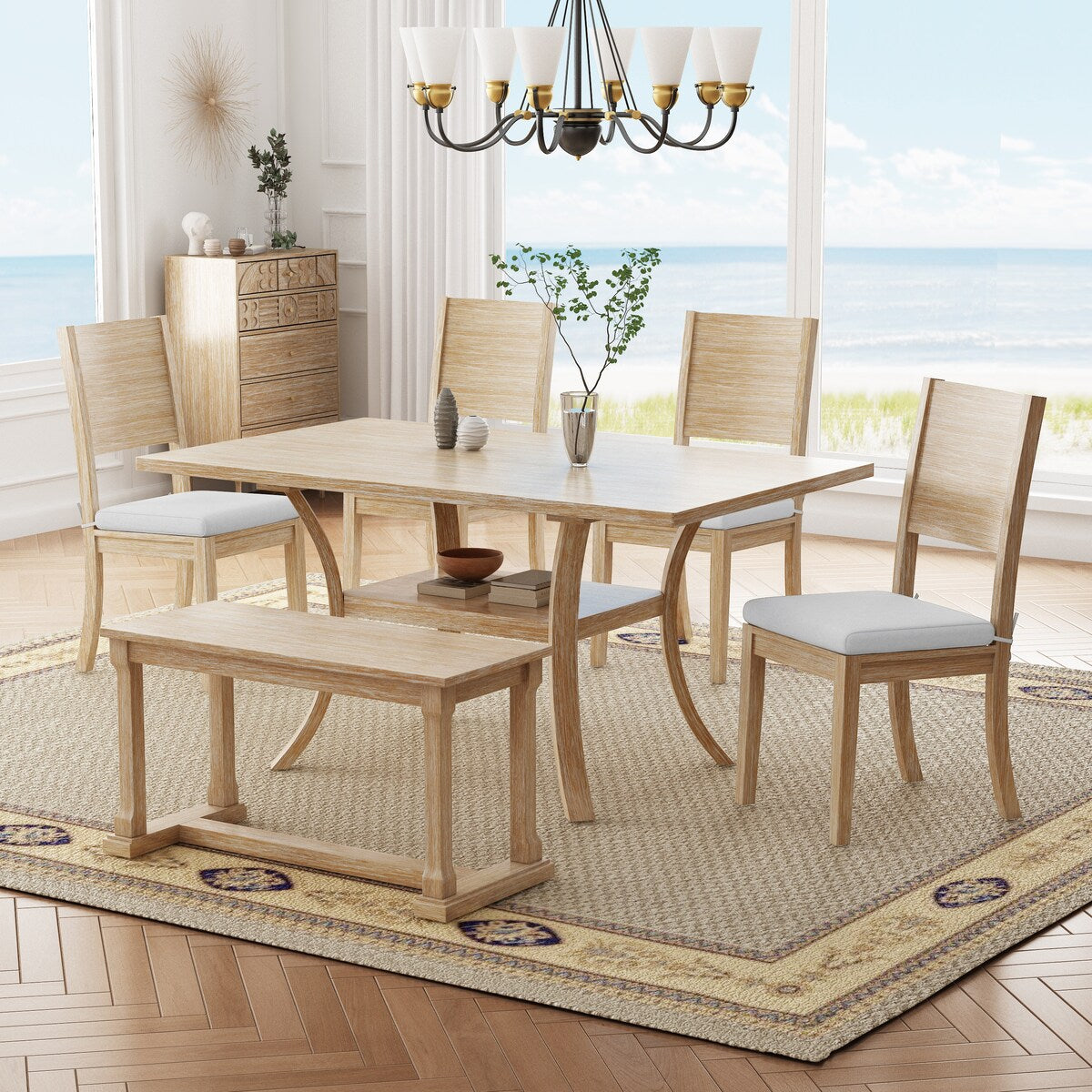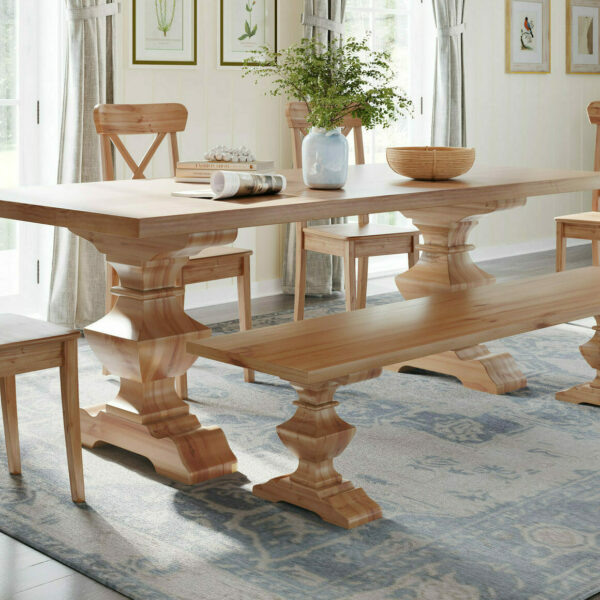Tips for Installing Dining Room Table Legs for a Modern Look
Tips for Installing Dining Room Table Legs for a Modern Look
Blog Article
From Standard to Modern: Find the Ideal Dining-room Table Legs for Your Style
While traditional designs such as cabriole and turned legs stimulate a sense of ageless class, contemporary styles like barrette and geometric alternatives provide a chance for striking visual passion. As you think about these elements, the question remains: how can you flawlessly integrate these varied leg designs to create an unified dining experience?
Understanding Table Leg Styles
The selection of eating room table leg styles can dramatically affect both the looks and performance of the area. Each leg style contributes special visual components and useful functions, providing to diverse design preferences and usage requirements. Recognizing these designs is crucial for picking the right dining table that aligns with your overall interior decoration vision.
For example, tapered legs offer a clean, timeless appearance that can improve a space's sophistication, while stand bases provide stability and make best use of legroom, making them excellent for smaller sized rooms. Barrette legs, a hallmark of mid-century contemporary layout, present a commercial flair, enabling an airy, open feel. Likewise, trestle legs evoke rustic charm, offering robust assistance and a feeling of timelessness.
Wood legs can bring warmth and texture, whereas steel alternatives often share a streamlined, contemporary ambiance. Inevitably, comprehending table leg designs is crucial for producing a natural dining location that mirrors individual style while making sure practicality and comfort.
Standard Table Leg Options
When picking dining space table legs, standard alternatives commonly symbolize classic beauty and craftsmanship. These designs show an abundant heritage and a commitment to quality, making them perfect for those that appreciate traditional appearances.
Among one of the most legendary typical leg designs is the cabriole leg, defined by its stylish curved form. This layout commonly features decorative carvings and is most typically found in Queen Anne and Chippendale furnishings. Another popular alternative is the transformed leg, which flaunts a collection of smooth, rounded shapes that give a traditional appearance while keeping security.
Moreover, the straight leg, while basic, offers a basic and tough structure that can mix effortlessly with a selection of tabletop designs. For those attracted to ornate outlining, claw-and-ball feet legs stimulate a sense of splendour and can serve as a magnificent prime focus in any type of eating space.
Lastly, stand bases, although not purely legs, supply a different standard choice that permits enough legroom and can be perfectly sculpted. Each of these conventional leg styles adds to the total ambiance of an eating area, weding feature with visual charm.

Modern Table Leg Designs
Modern table leg layouts offer a diverse series of designs that emphasize cutting-edge materials and tidy lines. These designs commonly focus on capability while acting as striking prime focus within Home Page an eating area. Minimal looks are common, with legs crafted from products such as metal, glass, and crafted wood, which contribute to a contemporary and airy feel.
One popular layout is the hairpin leg, identified by its slim, tapered framework that supplies stability without overwhelming the tabletop (dining room table legs). This design is often discovered in mid-century modern-day furnishings and can effortlessly complement numerous eating table shapes. Another fad is making use of geometric shapes, where legs might tackle angular or unbalanced forms, including aesthetic rate of interest and a touch of virtuosity

Blending Styles for One-of-a-kind Rooms
Typically, property owners look for to create one-of-a-kind eating areas that reflect their individual design by blending numerous design elements. look what i found This approach enables the consolidation of varied appearances, resulting in an unified yet distinctive environment. For circumstances, matching a rustic wood table with streamlined, contemporary steel legs can produce an eye-catching comparison that boosts the area's overall appeal.
In addition, integrating vintage table legs with contemporary tabletops can stimulate a sense of background while keeping a modern sensibility. Such combinations not only display private taste but additionally urge imagination, enabling property owners to curate a space that really feels both personal and inviting.
Color plays an important duty in this mixing procedure; picking table legs that enhance or contrast with the existing shade system can improve visual interest. Whitewashed legs can soften the daring of a dark table surface area, producing a balanced aesthetic.
Tips for Choosing the Right Legs
Choosing the right table legs is necessary for achieving both performance and aesthetic charm in your eating room. Begin by taking into consideration the total style of your room. Traditional setups profit from legs that include elaborate carvings or transformed designs, while contemporary areas might call for streamlined, minimal designs.
Following, assess the height and security of the legs. dining room table legs. Conventional dining tables look here range in between 28 to 30 inches in height, so guarantee the legs enhance this measurement for convenience. Additionally, robust products, such as wood or steel, can enhance security and long life
Review the leg shape too-- options include right, tapered, or stand designs. Straight legs offer a timeless appearance, while conical legs can add a touch of style. Pedestal bases give enough legroom and are excellent for smaller areas.
Final Thought
In recap, picking the excellent dining-room table legs requires cautious factor to consider of both standard and modern-day designs. Traditional options such as cabriole and transformed legs provide classic elegance, while modern designs like barrette and geometric forms provide a contemporary touch. By balancing leg style, height, and product with the overall décor, a cohesive and welcoming ambience can be achieved. Eventually, the chosen table legs ought to show the preferred visual, improving the dining experience within the area.
The selection of dining room table leg designs can considerably influence both the visual appeals and functionality of the room. Ultimately, recognizing table leg designs is crucial for producing a cohesive eating area that mirrors personal design while making sure functionality and convenience.One of the most renowned typical leg styles is the cabriole leg, identified by its stylish curved shape. Straight legs supply a traditional appearance, while tapered legs can add a touch of style.In summary, picking the perfect eating area table legs needs cautious consideration of both traditional and contemporary styles.
Report this page